|
INFORMATION ON THE 2016 BOARD MEMBER ELECTION
To the Membership,
On September 17, 2016, the United States Orienteering Federation will hold its Annual General Meeting (AGM) from 4–6 PM at the Hampton Inn, 81 Newtown Road, Danbury, Connecticut. All active federation members are invited to attend.
Of particular note is the election of the federation’s Board of Directors. This year we have nine candidates running for five positions (one currently unfilled two-year position and four three-year positions). Club representatives cast votes for the candidates of their choice.
Here is the section of the federation Bylaws that pertains to voting:
Bylaws, page 5—Article VI, Section A: “A.3.b. The voting rights of the Regular Members of the Federation are handled by the club delegates and alternates as per Section A.3.a above, except that a Regular Member in attendance at the convention who wishes to vote directly on general meeting issues rather than through his club delegate(s) may do so if approved by the credentials committee as outlined in Section A.3.e below. In this case the vote of the club delegate(s) shall be reduced by one. A.3.c. Each Regular Member has one vote. Family memberships are entitled to two votes if at least two family members are present. If only one is present, family membership gives only one vote.”
I look forward to seeing all of you at this September’s AGM.
Sincerely,
Peter Goodwin
President
The method of voting
The Bylaws state (Article VII, Section D): “In the event of tie involving the nominees receiving the fourth (4th) highest number of votes, a second ballot shall be taken among the tied nominees only.”
1) Voting occurs for the five open positions.
2) Candidates with the four highest vote counts will get three-year terms.
3) The candidate who gets the fifth highest vote count will get the two-year term.
4) In the event of a tie, a second ballot will be taken among the tied nominees only.
5) If one of the people getting a three-year term wants to defer to the person getting the two-year term and both parties are agreeable, then the switch can be made after the voting but before the first board meeting which will follow the AGM.
2016 Candidates for USOF Board of Directors
BARBARA BRYANT
CLARE DURAND
DONNA FLUEGEL (Current Board Secretary)
BORIS GRANOVSKIY
ALEX JOSPE
PAT MEEHAN (Current Board VP Finance)
IAN SMITH
KEVIN TESCHENDORF
GAVIN WYATT-MAIR
The following are personal statements from each of the candidates, in alphabetical order by last name. They have been lightly edited for grammar or spelling errors.
BARBARA BRYANT 
New England Orienteering Club
Personal Statement
I would like to join the OUSA Board in order to massively increase participation in orienteering in the USA, with a focus on youth and families.
In the past decade, OUSA has created great communication tools via the website, Facebook, Twitter, and the newsletter. I’d like us to build on that, particularly encouraging communication from orienteers to the board, between clubs, and outwardly from the orienteering community to the larger world. I believe this is a good time for the Board to actively listen to people with ideas about how to achieve our mission, and then find ways to support and connect those people who are willing and able to do the work of implementing those ideas. In order to make all this happen, the OUSA Board will need to involve and empower more people on productive committees and projects, and revise its own processes to ensure that nothing stands in the way of progress toward our goals.
While I do not wish to prescribe any particular solution before having more conversations with clubs, ideas that have intrigued me include creating an OUSA committee to focus on expanding youth orienteering, building an O-in-schools program, supporting coach Erin Schirm’s work on an age-appropriate athlete development program, shifting toward team formats, reinvigorating our coaching certification system originally developed by Bob Turbyfill, and sharing lessons learned from great local programs like the WIOL school league and the NTOA orienteering camp. I would like to see OUSA distribute materials and activity plans to make it super easy for a club to start a new kids’ program. With increased participation in orienteering, there will be more revenue to be able to fund needed paid staff positions at the local and national levels to support these efforts. I would like to learn from other organizations who have successfully built strong youth programs.
My experience supporting junior orienteering
I have been working for several years in support of children’s orienteering. The first time I spoke at a meeting of the USOF board, it was to advocate for enforcing the requirement for A-meets to provide childcare, in order to keep the sport family-friendly. Initially motivated by my daughter’s participation on our national junior team, I served as Junior Team Administrator from 2012 to 2014. In that role, I was part of the team creating the national coach position funded by Peter Gagarin, and I worked closely with Erin Schirm as he transformed the national team to emphasize year-round training, communication, attendance at camps and national meets, and athleticism. I served on the Junior Team Executive Steering Committee, the JWOC Selection Committee, and the new Safety Committee that resulted from one of our open parent calls; together we developed the Safety Handbook. These experiences have given me an inside understanding of how OUSA functions and, in support of the junior program, I have had the great pleasure of working with (among others) our accountant on bookkeeping, the OUSA President on new initiatives, the Rules Committee on changes to the bylaws, the Executive Director on public relations, and the ONA Editor on communicating our juniors’ experiences. We already have a lot of great people with good ideas, and I’d like to build on that with a new strong emphasis on growth and increased participation, not only in orienteering, but also of people on OUSA committees and projects.
At the local level, I have volunteered to teach orienteering in schools for over 15 years. In 2015 I founded the nonprofit Navigation Games to expand those efforts. The organization works in partnership with local orienteering clubs (NEOC and CSU). In 2015, we conducted over 150 hours of teaching, worked with over 300 children at 11 schools, put on public introductory orienteering events, and involved more than 30 adults and teenagers in teaching orienteering. In 2016, we took two teams to the US Interscholastic Championships, and ran a 6-week summer program in partnership with the City of Cambridge, in which teenagers were paid to learn and teach orienteering, and to begin planning for an interscholastic league. I would like to build on this experience at the national level.
My nonprofit leadership experience
As the former Chair of the Rogaining committee, I worked on bringing OUSA into the International Rogaining Federation (on whose board I served for three years) and laying the groundwork for bringing the World Rogaining Championship to the USA in 2014. I love the rogaine format for its emphasis on teamwork, and the strategy needed for a team to thrive through 24 hours of racing.
My nonprofit experience includes chairing the Public Affairs and Policy Committee, VP and Secretary positions, and 8 years of serving on the Board of the International Society for Computational Biology, including development of a 5-year strategic plan and overseeing major growth in membership and services such as conferences and a student council. I served on the Board and Science Policy Committee of the Federation of American Societies for Experimental Biology; one project I undertook addressed problems scientists were facing obtaining visas in the post-2001 climate. I was part of the editorial board for the new peer-reviewed Open-access journal PLoS Computational Biology the year it was founded, and served as its Deputy Editor-in-Chief for four years as we worked to innovate with new approaches to publishing. I served on the board of the Cambridgeport Children’s Center for four years, and held the positions of Vice President and President.
In summary, I believe I am well equipped to contribute productively to the OUSA Board. I have experience starting, leading and growing nonprofit organizations. I have proven myself a good partner in supporting other’s ambitious ideas for growth and change, and I have made real some of my own dreams. A major focus for me has been youth orienteering, and I would like to see OUSA contribute to a future in which every child in America experiences the joys of our sport. I am excited at the prospect of working with both seasoned and knowledgeable veterans of the Board and “new blood” coming in with fresh energy and great ideas.
CLARE DURAND 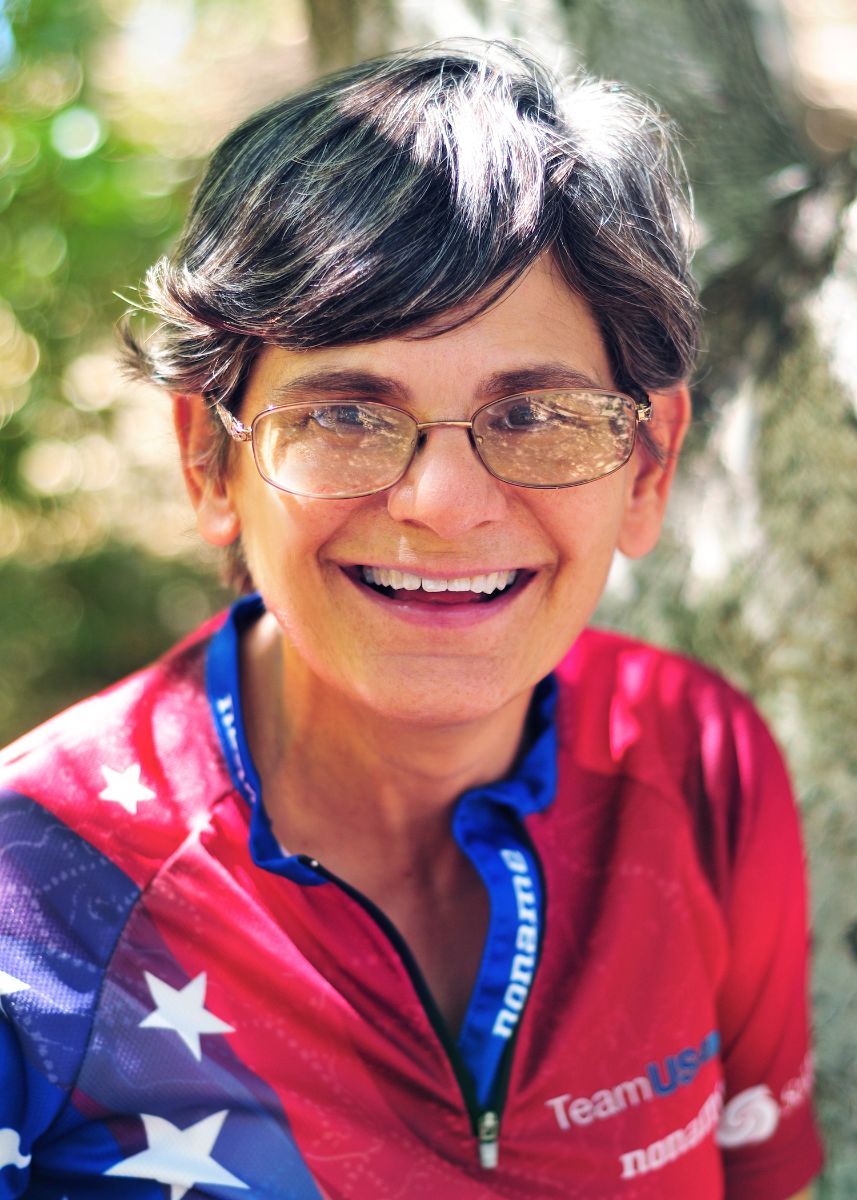
Los Angeles Orienteering Club
Currently Event Coordinator for LAOC and Rules Committee Chair for OUSA
Past Board Experience includes service as Pacific Region Rep, VP Competition, and President of OUSA
Personal Statement
The primary mission of OUSA is to support and promote orienteering in the US. For me this translates into two main issues:
(1) Get people orienteering
(2) Improve our international performance
I bring important institutional memory and experience to the board while continuing to strive for constant improvement in how we operate. I believe that OUSA, and orienteering in the US in general, is hampered by an overreliance on volunteer labor. Volunteers do amazing things for our sport, but most other sporting organizations have larger professionally produced events and a greater number of paid staff and contractors to insure this level of service. Our most appreciated initiative in recent memory has been the hiring of a full-time junior coach. I want to investigate and promote financially sound ways to bring more paid professionals into our sport — especially in the realm of event production and management, junior programs, mapping, and athlete support and development — at both the national and local levels.
DONNA FLUEGEL 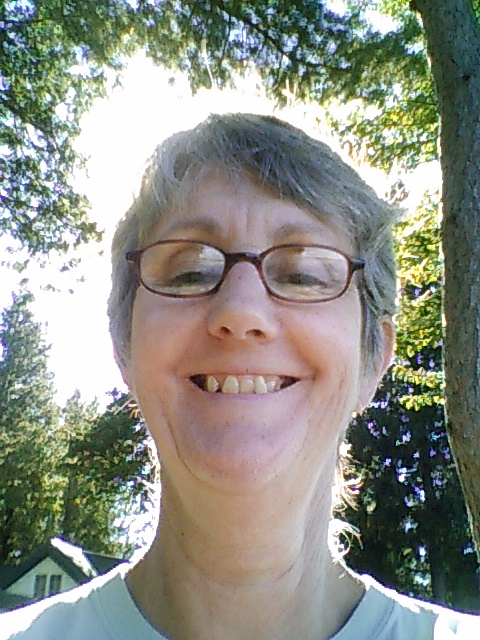
Western Connecticut Orienteering Club, Florida Orienteering
1993 - Started orienteering
1993–Present - Various WCOC and HVO positions
1999–Present - Orienteering North America publisher
2008–2010 - OUSA VP Marketing
2010–Present - OUSA Secretary
Personal Statement
I have been orienteering for approximately 25 years during which time I have held various positions at the local level (WCOC and HVO), from newsletter editor to secretary. In addition, I served as meet director for several national meets as well as many local events.
I have served on the OUSA Board of Directors since 2008. I was elected to the Executive Committee of the BOD first as VP Marketing (in position for 2 years) and then, since 2010, as Recording Secretary. Among my responsibilities are OUSA Board recruitment, National Orienteering Week, and various other marketing duties.
In addition, I have been the publisher of Orienteering North America since 1999.
Based on my experience and analysis, I support the general direction that OUSA is heading (although at a faster pace), feel that we need a paid Executive Director, and think that the allocation of revenues among our various constituents is about right.
A vote for me is a vote for experience and continuity.
BORIS GRANOVSKIY 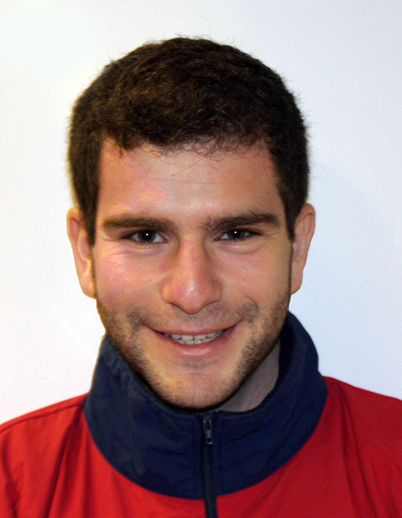
Cambridge Sports Union
Personal Statement
Who Am I?
I started orienteering in Russia at the age of nine and have been hooked on the sport ever since. I have been a competitive orienteer at the senior level for many years, and have represented the U.S. at the World Orienteering Championships six times. As a volunteer at the club level, I have organized numerous local and regional events and training camps and have designed courses for national events in the USA and in Sweden. At the national level, I helped found the Orienteering USA End-of-the-Year Competitive Awards Program, served on the Senior Team’s Executive Steering Committee, and was the chair of OUSA’s Sanctioning Committee. More recently I have gotten very interested in coaching and helping young athletes improve. I am involved in coaching multiple athletes on the US National Team. In 2015 I started the Mid-Atlantic Junior Regional Team and am looking to grow and expand this program.
In my non-orienteering life, I live in Washington, DC, with my wife Allison and beagle Barney and work as an Education Policy Analyst for the Congressional Research Service.
Why Am I Running for the Board of Directors?
I have always been interested in helping grow and improve our wonderful sport. When my family emigrated from Russia to the United States in 1992, the US orienteering community took me in, welcomed me, and became my home. Most of my oldest and closest friends around the country come from orienteering. This small, but wonderfully open-hearted, community has supported me for decades through the ups and downs of my competitive career, and I am excited for the opportunity to give back.
I love our US orienteering community, but I have not seen it grow or thrive since I became a part of it in 1993. The people I see at orienteering events are often the same ones I saw when I first started orienteering here, but 20 years older. While it is wonderful to see old friends and familiar faces, the sport has no future if we do not grow and do not attract new blood. When we are too old to organize competitions, who will be drawing the maps and setting the courses?
Therefore, the main reason I am running for the OUSA Board of Directors is to help our sport grow and expand in the United States, with an emphasis on getting more children, young people, and families orienteering. Since I believe that a lot of the real work in recruitment and outreach is done at the club level, I plan to work hard to make sure that OUSA is able to provide a service by supporting and encouraging clubs to grow orienteering regionally and locally.
What Do I Hope to Accomplish?
My main goals for serving on the Board are as follows:
Increasing transparency of OUSA's activities and spending;
Improving the services provided to the clubs by OUSA, such as support with event organization, technology, and marketing;
Improving OUSA’s communication and outreach to the clubs by building on OUSA’s current social media efforts, so that clubs and members understand the services that OUSA is able to provide, and listening to feedback about services that members are interested in;
Helping clubs grow youth orienteering activity on a regional basis, modeled after the success of Adventure Running Kids in Canada, the Washington Interscholastic Orienteering League in Seattle, Texas’ TJOC, and Boston’s Navigation Games ;
Providing incentives for clubs to organize more national events, including by making technical expertise available to clubs that lack it and by having clubs partner with National Teams when organizing events;
Supporting the development of domestic event organizers and course consultants by holding regional clinics and helping less experienced volunteers get expert help;
Expanding the population of professional, US-based orienteering mappers by providing grants for training and mentorship domestically and overseas;
Strengthening OUSA's support for elite athletes at both the senior and junior levels, and increasing the focus on athlete development; and finally;
Growth of the sport: Analyze what methods of outreach to the non-orienteering community have been most effective (beginner-only events, REI clinics, trail races with shortcuts, social media outreach, etc.), provide resources to the clubs to be able to carry out that type of outreach, and pay a dedicated, part-time person whose only responsibilities are marketing and grant-writing.
ALEX JOSPE 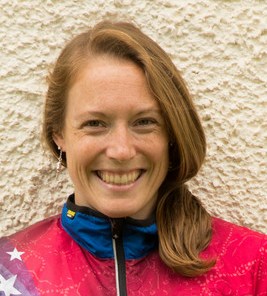
Cambridge Sports Union, New England Orienteering Club
Personal Statement
Goal: Grow orienteering in the USA in order to support elite development and a healthy and fun competitive atmosphere.
1. Grow the base of the competitive sport
2. Provide fun and fair competition
3. Support our elite athletes
Why am I running for the board?
Over the last nine years of competing for the USA in ski and summer orienteering, I have received a lot of support, both institutional and individual, as I pursued my goals. My passion for the sport continues to grow as I reach the end of my competitive career in F21, and I want to give back to the community that has provided me with so many life-changing opportunities. While I have every intention of continuing my work with the Cambridge Sports Union as Event Director, I think that I can reach a broader audience if I turn my energy to the national federation. It is time for me to step up to these responsibilities, and I feel I have a lot to offer, not only due to my experience at the top level of our sport but also in terms of my ability to be a team player. I have a history of working well with others, without compromising our desired goals, and I am driven, capable, and organized. Combined with my energy and enthusiasm, I am a good person to have on your committees.
What do I hope to achieve?
Orienteering in the USA needs to increase its visibility and its membership. With our current numbers, we cannot unlock the potential of this fantastic sport. In order to increase the overall level of competition in orienteering races, we need to increase the number of people orienteering, from the national event crowd down to the local races. There are a lot of ways to go about doing this, and we already have a lot of committees working on this exact problem. I am looking forward to understanding the work the various committees have done on these efforts the challenges they have faced, and working together to develop viable solutions. I am proposing changes to the following:
- Event Structure
- Orienteering Visibility
- Elite Development
Event Structure
We have a fairly robust series of National Events but quality is inconsistent. We need to ensure fun and fair course setting, timing and event production in order to promote top-level competition, and to that end I would like to restructure the sanctioning committee, to give a little more power and ensure quality. At the national level, this organization needs to be able to provide materials of consistent quality and content to assist the clubs who are organizing these events. With the shift in technology in recent years, we need to be able to provide or pay for personnel who understand how to best use these technologies, rather than relying on clubs to have expensive equipment that is only needed at the National Events. And, we need to provide our membership with a reason to come to events.
I am proposing that we structure our National Events into two tiers. The first tier (Elite Series) will include our championship events and other very high-profile events, and runners will experience the highest level of competition at these 3-4 events. National Team athletes will be attending some number of these events, as outlined in their athlete contracts. The second tier (National League) of events will feature lower-key races, that are easier for a club to host from an organizational side of things, but maintain the same high-quality courses and maps that we as a community have come to expect from National Events.
In the next tier, we have the regional and local-level events, and I would really like the national organization to start asking: What can OUSA do to help your club achieve its goals?
Finally, we have the non-traditional events. Things like mass-starts, urban races, team races and score events are all very attractive to newcomers, and ought not to be shunned. These are race formats that might better pursued at the local level (as we’re doing with CSU), but I would like to see the national organization actively assist the local clubs in their pursuit of fun events that will attract a wider crowd.
Orienteering Visibility
In the sense that national teams are a product that OUSA is selling to the informed public, we are doing a middling job at promoting these teams through ONA, Facebook and the occasional press release. I think we ought to step up this work, and hopefully through the Elite Series (and thus the presence of more elites in one place) we can build more of a relationship between your everyday orienteer and the young elites.
Casting the net much more broadly, though, we need to be marketing our sport to a much wider, yet relevant, audience. I am suggesting that we reconfigure our paid staffing positions to include much more targeted advertising, marketing and event promotion tasks. These tasks need to be tracked with measureable metrics, and revisited as required. We live in a world with changing priorities, technologies and populations, and it is imperative that we as an organization keep up with the changes!
Finally, looking inward, we need a much better way to not just communicate with our members, but to learn who they are. I suggest that the clubs using EventRegister to host their events get a per-head discount, so that more orienteers end up in the database. We can be using this database for communication across the nation, so that everyone who is interested in orienteering can easily find and sign up for races, learn about OUSA pursuits, and stay abreast of all things orienteering in this digital world.
Elite development
Taking our existing athletes and making them faster is a topic near and dear to my heart. I want to be able to help folks like 23-year old Alex, full of enthusiasm but with no idea where to go next. We need to start with a cohesive program that spans the competitive age ranges as well as the geographic breadth of the USA. This program should be highly visible, and structured to broadly include many athletes of varying abilities, with a tiered support system.
I want to see national support and organization for all of the US Teams – Senior, Junior, Ski, MTBO, Deaf, Military, World Masters, etc. There is enough cross-over to leverage support for everyone, and this broader approach may touch more clubs, which may lead to more support for their members.
I want to see the development of two to three Centers of Excellence, preferably one on each coast and one in the Midwest. This can take many forms, but the underlying idea is to get elite athletes training together in areas with a lot of maps and a lot of club support for elite runners. OUSA director of Sport Development, Erin Schirm, is already working on this idea, and I am in full support. We are going to start with a CoE in Boston, hiring a coach part-time for the existing athletes, and growing the pool as we go.
I want to see a consistent coaching manual that can help folks take on everyone from youth to adult competitors. This manual should be taught at a series of coaching clinics across the country. With great coaches, we can create great athletes.
Finally, a strong competitive program can only exist if we have a strong junior development program. There are a lot of people already heavily involved with our junior program, and I feel that it is going in the right direction, so I only mention this so that you know I am in full support of junior orienteering.
In Conclusion
It may sound like I have a lot on my plate, but I strongly believe that the three prongs of this approach are implicitly tied:
1. Restructure our National Events to deepen competition among existing orienteers and appeal to a wider audience.
2. Looking outward: Market our sport to a targeted audience using a paid staff member who is adept in modern technologies. Looking inward: Communicate better with local clubs as to what the national organization is actually doing.
3. Use our elite teams to leverage more support for elite athletes, providing them the support they need to achieve greatness in this sport in the form of a cohesive national program, qualified coaches, and national training centers.
PAT MEEHAN 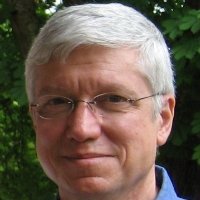
Orienteering Cincinnati
OUSA Vice President/Finance – Current
Personal Statement
I have been a member of USOF for 33 years. I am a founding member of OCIN. Although my competitive years have passed, my passion for Orienteering has not. Most of us wish to see the sport grow and to continue well beyond our time. Locally I promote and support OCIN’s efforts with junior development. We financially support our Junior League (TROL), and all of our local efforts, through our annual event, the Flying Pig.
I would like to see OUSA do the following:
1. Continue to provide (and improve where possible) insurance, ONA, a website, support for our national teams, and our volunteer and committee structure.
2. Provide services to our member clubs, such as guidelines, success stories and best practices in all facets of club management that interest our individual clubs; allowing them to leverage the experiences of others. In addition, create tools, such as a membership management site for local clubs, in the spirit of our event registration.
3. Become financially transparent and responsible on how we budget, collect, spend and report our finances. Modeling our financial reports around the activities and funds that make up OUSA. Making changes that most of us can understand. In addition, we should review in detail how we can best spend our money to meet our long term hopes and wishes. I am not afraid to explore major changes in how we spend our revenue now.
4. Consider providing more support to Junior coaches and Junior Programs, expanding on what has worked locally and or more recent national efforts.
5. Investing in and keeping our website as a useful source of all information for all audiences, keeping it fresh and dynamic, continually improving it as the go-to site for all things related to Orienteering.
IAN SMITH 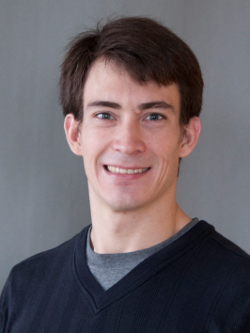
New England Orienteering Club
Objective: As a director of Orienteering USA, I propose to focus the organization on the priorities of growth through junior development, marketing and publicity, support for elite teams, providing services for member clubs, and sustainably reorganizing OUSA to better serve the community.
Who am I?
I started orienteering in Boston in 2007 at the age of 22 because I had friends who were active in Cambridge Sports Union. I have been a member of the national team since 2013, and I have been to O-ringen, Jukola, Tiomila, and other multiday festivals in Europe. I have the odd circumstance of having been active in two very different clubs: Cambridge Sports Union and the New England Orienteering Club. Since 2010, I have had a leadership role in NEOC including directing two National Meets, directing numerous local events, serving on the Board of Directors, as the Event coordinator, and as the chair of mapping and National Meet committee. My time in NEOC helped me understand key differences between two important objectives of sustaining the organization and executing an agenda.
Why am I running for the Board?
Our sport faces many challenges, chief among which is the lack of growth. It’s disheartening to see national meet attendance decline and the median age of orienteers continue to rise. I have traveled all over the country attending meets, and I never cease to be impressed at the community, the opportunities, and the adventures we have through orienteering.
I am not satisfied with the current priorities and execution of OUSA, and I believe my experience with NEOC and the perspective that I bring to the community can help. Broadly, I see four objectives for OUSA:
1. Provide services and support for clubs, including insurance, best practices, community engagement and communication, training, and standards.
2. Publicize and market the sport both within the community to celebrate achievements and to attract new participation. Support clubs as they publicize locally and regionally.
3. Grow the sport through development and support of junior programs. School leagues and junior programs are crucial for the future of the sport.
4. Support elite teams. This includes resource support and recognition of athletes at all levels - the Junior and Senior teams, MTBO, Trail-O, Ski-O, and World Masters.
I recently analyzed OUSA’s unrestricted spending, and I found it does not reflect these priorities. Part of my agenda is restructuring the organization and its budget to support these endeavors. For the (cursory) analysis, please see here: http://tinyurl.com/bod-ismith
What will I do?
1. Restructure the paid positions in OUSA. Instead of a broad Executive Director, I propose a much more limited publicity and marketing position whose responsibilities are disseminating information within the community and to the general public through social media and mass media and to assist local clubs in their publicity efforts. Bring our budget into balance.
2. Fund the development of junior programs in the mold of COC’s WIOL, Canada’s ARK, Boston’s Navigation Games, and Texas’ TJOC. Collect and share best practices and provide grants to develop 3 new sustaining programs over the next five years.
3. Continue the existing club services and expand them. Listening to the clubs about what they need is paramount. In my time on the NEOC leadership, I was never contacted by anyone from OUSA, and the national federation must engage with the local clubs - which execute all our events. Services to include publicity, technology, event quality, mapping, and training.
4. Increase support for the elite teams. Over the past five years, OUSA’s unrestricted support for the elite teams has amounted to 6% of the budget. I propose to increase that to at least 10%, with emphasis on juniors.
5. Coordinate the national calendar, including organizing clubs into a coherent schedule, publicize (there’s that theme again), support and incentivize smaller clubs, and promote sprint tournaments and sprint camps that are the next wave of big orienteering events. Reach out to Orienteering Canada to coordinate national schedules.
6. Finally, I will engage the community through regular outreach on Attackpoint, regular open forums and conference calls to discuss issues and actions, and talking to individual clubs about how OUSA can best support them.
KEVIN TESCHENDORF 
Badger Orienteering Club
Personal Statement
I see the primary function of OUSA as the following:
- support the member clubs, particularly to help them grow
- support youth and elite programs
- facilitate a good schedule of national events and rankings
- use club fees responsibly to promote the sport of orienteering
I would like to see OUSA communicate better with clubs, get more feedback from them and support the efforts of the clubs.
OUSA has started work on youth programs. I would like to see this prioritized.
I have a lot of experience as a small club officer and I would like to bring that perspective to the board.
OUSA generates quite a lot of money through taxation of clubs. I would like to have the board reevaluate how it spends its money, prioritize what it spends money on and make cuts to spending items that aren't giving us a good return on investment. I would like clubs to see tangible benefits from the money they pay to OUSA.
Below is brief resume of things I have done through the years:
- Organized orienteering school field trips for 20 years and introduced over 10,000 students to the sport of orienteering through this business.
- Taught an orienteering course at the University of Wisconsin-Milwaukee for over 15 years.
- Produced over 30 orienteering maps for my club and others.
- Event director, mapper and course setter for the 2009 US Championships
- President of the Badger Orienteering Club for many years; I have set up hundreds of orienteering events over the past 25 years.
- Participated in numerous overseas events including 3 Jukolas and many local Finnish events, as well as events in Norway, Sweden, Poland, England and Ireland
- US Classic age-group champion 3 times.
GAVIN WYATT-MAIR 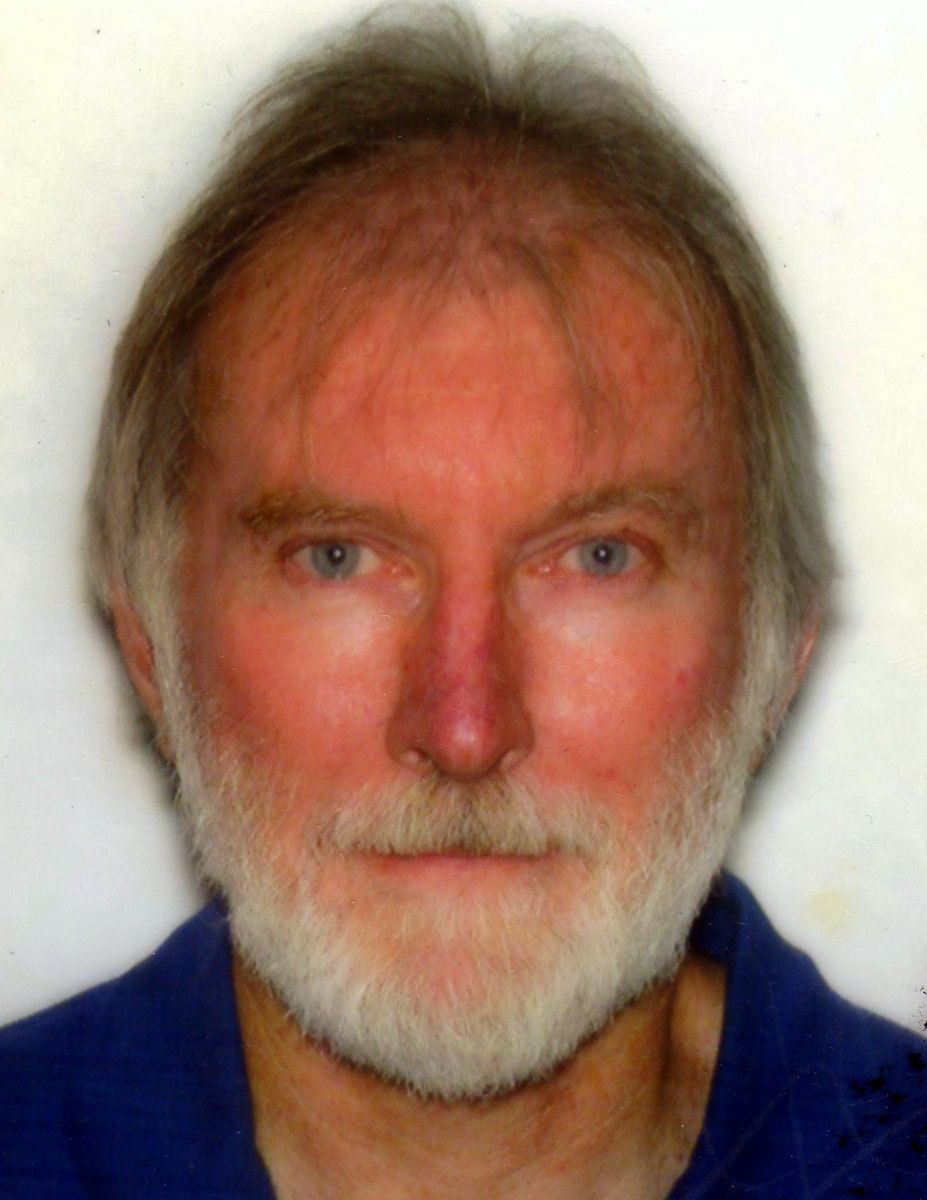
Bay Area Orienteering Club
Personal Statement
Objective:
To help direct and grow orienteering in the United States as a member of OUSA board.
Relevant professional leadership and management positions:
Current position:
2014-2016: Fellow, Alcoa MicromillTM, San Antonio, Texas
Previous positions:
2003-2013: General Manager, Alcoa Micromill™, San Antonio, TX and Plant Manager, Alcoa Micromill™, Reno, NV.
2000-2002: Director of MicromillTM Technology, Alcoa Inc.
1992-1999: Associate Director and Founder, MicromillTM Technology, Kaiser Aluminum & Chemical Corp. Center for Technology, Pleasanton, CA.
Orienteering Experience:
I started orienteering in 1997, when I joined the Bay Area Orienteering Club. I started on the Blue course at Big Basin Redwoods State Park — wow, what a challenge! — and I was hooked. Since then, I have spent the majority of my fitness-related spare time training for and doing orienteering events. Over the years, I have gradually improved, reaching around 10th in US ranking for M60. I have competed in numerous US championships and A-meets all across the country, as well as the Scottish 6-days (three times), spectator events at JWOC in Australia and WOC in France, and numerous Canadian national and regional championships. I participate in all aspects of foot orienteering, from Sprints to Ultra Longs, from TrailO to Rogaines. I have been a national Champion only a few times — most often in NightO, and I still love the competitions and the continuous improvement opportunities. The past four years, my rogaining partner Sue and I have been representing the US at the World Rogaining Championships and we made it to 12th place in the SuperVet category in Australia — it was very tough, and we were pleased!!!
Over the past 20 years, I have worked hard at supporting BAOC and US Orienteering in general. I am particularly pleased with the evolution of the annual Bay Area Scout Orienteering Championships and B-meet, which I inaugurated in 1991, and have directed each of the past 25 years. I have been course setter for the advanced courses every year in addition to meet director, and meet attendance has grown from 67 participants in 1991 to a peak of about 800, and a recent average of around 600 per year. In addition to the ScoutO, BAOC has a youth league called COOL which I like to support, and I also have been putting on one or two meets per year for Waldorf middle schools for the past 14 years.
I was meet director for the 2011 US Inter-Scholastic and Inter-Collegiate championships at Pacheco Park and Casa de Fruta. This event was particularly pleasing in that attendance was high (over 400) and the subsequent feedback was positive. We had three great A-events (sprint-middle-long) and we enhanced the experience for everyone with a Sports Labyrinth, Ultimate StringO, Archery, Laser Tag, TrailO, NightO, a train ride and gem pan — and we provided pre-pitched tents and all food for the weekend. It took a lot of volunteers, coordination and planning to pull off this ambitious agenda, but it was worth it to see everyone having so much fun.
Together with a number of volunteers and pledges of help, I led an initiative to bring JWOC 2013 to the US. This initiative ultimately was not supported by USOF, primarily for financial reasons. I really believe that US orienteering missed a nice opportunity there. Maybe next time.
Some thoughts:
Growth is a primary ingredient, and in fact is a necessary condition but not quite a sufficient condition for the health of any organization, and this is true for orienteering too. There are various aspects that the word “growth” embraces — including meet frequency, number of clubs, starts, A-meets, attendance, memberships, international competition, and of course the prowess of our national teams. I believe that US growth requires strong youth programs, and that is one of the reasons I have spent so much effort supporting youth programs around the Bay Area. I will do what I can to support and enhance the growth of our sport.
Orienteering is tough, fun, intellectual and educational. I love orienteers! We are a whacky bunch, who thrive on a physical and mental challenge. There are plenty of folks out there like us — most have never heard of Orienteering, so let’s change that.
I believe that competition is the basis of our sport, and as such I would investigate ways to support and encourage clubs to bring big international competitions to the US.
Education:
PhD in Electrical Engineering, University of the Witwatersrand, South Africa, 1981
BSc(Eng) in Electrical Engineering (cum laude), University of the Witwatersrand, 1975
Personal:
I live in Lafayette, California with Nina. We have four (adult) children – Arwen, Malcolm (JWOC 2007 and 2008), Kelsey and Wendy. I have 16 patents, with more on the way. Besides orienteering, I enjoy almost all sports, especially running and soccer, and I read extensively in my spare time. My first language is English, and I am fluent in Afrikaans, which is a derivative of Dutch, Flemish and German. I also have a smattering of Zulu. Hambani Kahle!
|
